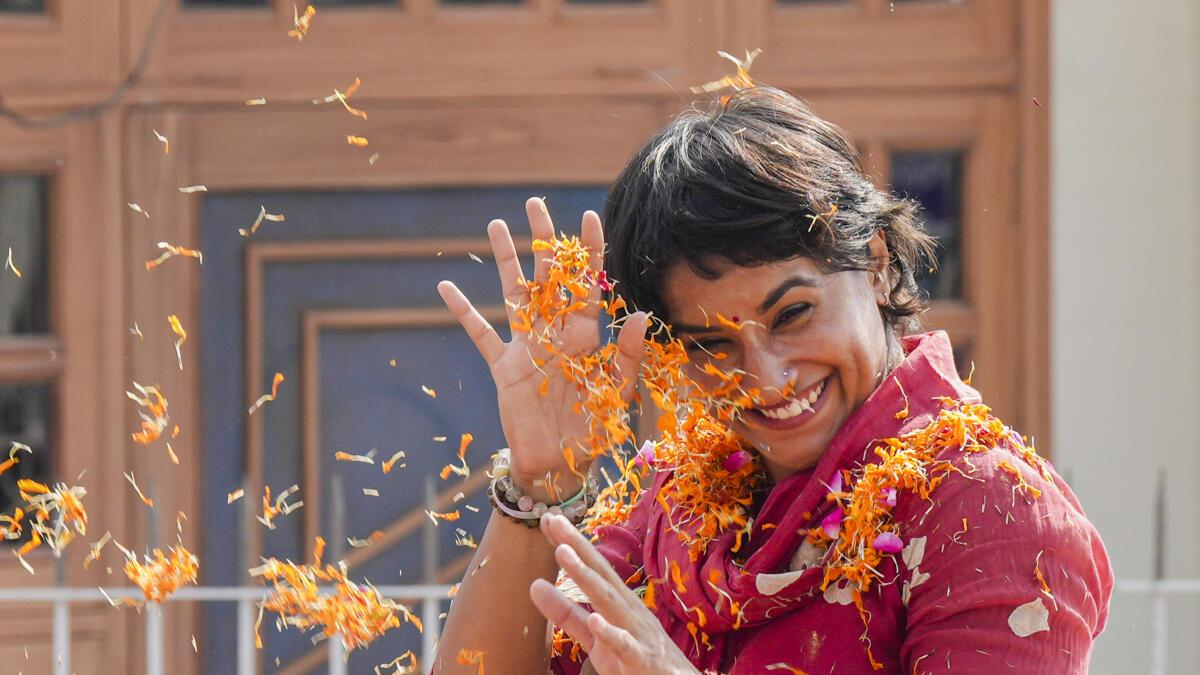 |
|
The year 2024 proved to be a period of intense upheaval and controversy within the landscape of Indian wrestling. The dominant narrative revolved around the ongoing conflict between protesting wrestlers and the former Wrestling Federation of India (WFI) chief, Brij Bhushan Sharan Singh. This protracted dispute, which began well before 2024, cast a long shadow over the entire sporting year, impacting training, preparations, and the overall morale of athletes. The wrestlers' protest, initially focused on allegations of sexual harassment and other forms of misconduct against Singh, escalated into a broader movement demanding systemic reforms within the WFI. The initial months of the year saw a multitude of protests and demonstrations, highlighting the deep-seated frustration and anger within the wrestling community. The impact was far-reaching, affecting not only the elite wrestlers but also younger athletes whose training and competitive opportunities were significantly hampered by the ongoing uncertainty.
The internal conflict within the WFI, fueled by the wrestlers’ protests and the subsequent investigations, led to a fractured Olympic preparation process. The staging of national championships became a contentious issue, with multiple events organized by different factions, further dividing the athletes and undermining their ability to focus on the Paris Olympics. This internal strife directly impacted the performances of Indian wrestlers at the Olympic games, creating a climate of uncertainty and hindering their chances of success. The situation was further compounded by the lack of unified support and the absence of a cohesive strategy to guide the athletes towards their goals. This internal disharmony not only prevented the creation of a collaborative training environment but also impacted team cohesion and national pride.
The Olympic campaign itself was marked by both triumphs and heartbreaks. Aman Sehrawat secured a medal, offering a glimmer of hope amidst the turmoil. However, Vinesh Phogat's experience was notably heartbreaking. Her failure to make weight by a mere kilogram resulted in her missing out on a medal opportunity, an experience that proved emotionally draining. This disappointment led to her unexpected retirement from competitive wrestling, followed by a surprising turn towards politics, where she achieved immediate success in her first election. This transition highlighted the broader impact of the wrestling crisis beyond the sporting arena, exposing the emotional toll on athletes and suggesting potential avenues for future engagement with the governing bodies of the sport.
Other prominent wrestlers also faced their share of challenges. Sakshi Malik, a key figure in the movement for change, ended the year welcoming parenthood and embarking on the publication of a tell-all book, suggesting that she too is turning a page and moving on from the tumultuous events of the year. Meanwhile, Bajrang Punia, another vocal participant in the protests, found himself embroiled in a new battle against doping authorities. The diverse experiences of these athletes – Vinesh’s move into politics, Sakshi’s literary endeavors, and Bajrang’s doping accusations – reflect the multifaceted fallout of the larger crisis within Indian wrestling.
The junior wrestlers, initially supportive of the movement initiated by their senior counterparts, eventually turned against them. This shift in allegiance was driven by the disruption of their own training schedules and competitive prospects, highlighting the far-reaching consequences of the internal conflicts within Indian wrestling. Their protest at Jantar Mantar further emphasized the depth of the crisis and the widespread dissatisfaction within the wrestling community, extending beyond just the elite athletes. The actions of junior wrestlers demonstrated a significant fracture in the unity that initially characterized the movement for reform.
The year culminated in the government intervening to ensure the Indian wrestling team’s participation in the World Championships after the WFI initially withdrew their entries. This late intervention, triggered by the wrestlers’ direct appeal to the Sports Minister, underscored the significant political pressure exerted on the governing bodies of Indian wrestling and hinted at the deep-seated power dynamics at play within the sport. The incident highlighted not only the power of collective action but also the vulnerability of athletes facing systemic challenges within the structures of their sport.
In conclusion, 2024 presented a complex and multifaceted picture of Indian wrestling. It showcased the profound impact of political infighting, allegations of misconduct, and the consequential disruption of training and competition on the careers and lives of wrestlers. While the year concluded with some degree of resolution concerning participation in international events, the broader issues of governance, accountability, and athlete welfare within Indian wrestling remain unresolved and will undoubtedly continue to shape the narrative of the sport in the years to come. The story of 2024 serves as a stark reminder of the crucial need for transparent and ethical leadership within sporting organizations to foster a healthy and thriving environment for athletes at all levels.
